Besan (बेसन) or gram flour is made with chana dal and is used to make several Indian favorites – savory and sweet. A common household staple, besan is very high in protein and can be stored in airtight containers. It is used to make chillas, dhoklas, curries, and even desserts. Besan is a light yellow colored flour and has fewer calories than regular whole wheat flour. It is naturally gluten-free. Let’s have a look at 20 different ways to use besan or gram flour in our kitchen.
Did you know besan is used to make face packs too? Besan when mixed with turmeric and rose water turns into a wonderful face pack for oily skin. If you have dry skin, swap the rose water with curd and honey. Test a small patch on your arm first, do not apply if it shows signs of allergy.
Table of Contents
1) The Evergreen Besan Chilla
One of the most common uses of besan is to turn it into a chilla. Chilla is a savory pancake made with gram flour, spices, and vegetables. Chilla is a great breakfast option and can be made with any vegetables you want. In a bowl make a batter by adding gram flour, salt, jeera, kasoori methi (dried fenugreek leaves), minced garlic, chopped onions, ginger, capsicum, and grated carrots. Add a healthy touch to your regular besan chilla with grated beetroot and some crumbled paneer. Cook in olive oil or ghee. Serve with ketchup, meethi saunth or refreshing green mint chutney.
2) Snack Time With Besan Khandvi
Khandvi is a perfectly light snack made with besan. Thin sheets of seasoned besan batter set on a plate, cut and rolled into small cylinders (as shown in the picture). Shredded coconut is added between sheets and on top. Tempered with black mustard seeds, curry leaves, and dried red chilies or fresh green chilies. A plateful of khandvi is a perfect solution for your evening hunger pangs.
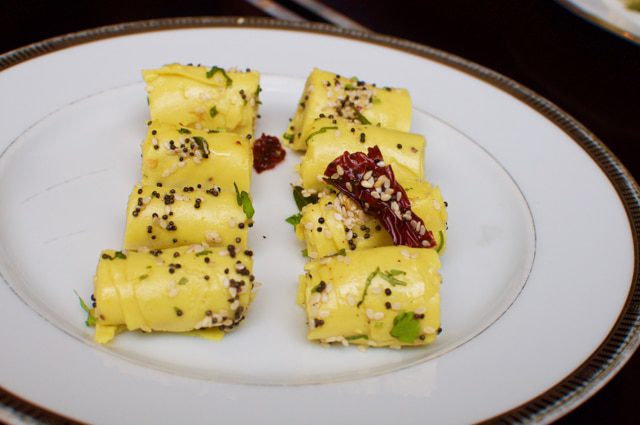
Image Credit – www.grubwaz.com
3) A Gujarati Classic – Thepla
Theplas are Gujarati flatbread that can be eaten during any time of the day. Be it breakfast, lunch, as a mid-day snack, tea time snack or during dinner time, theplas are always welcome. Theplas are made with whole wheat flour, gram flour, kasoori methi and spices. Some like to add vegetables too. Theplas are quiet travel friendly as they can be eaten at room temperature with or without a pickle. A chili pickle, mango pickle or even a mix vegetable pickle pairs wonderfully with theplas.
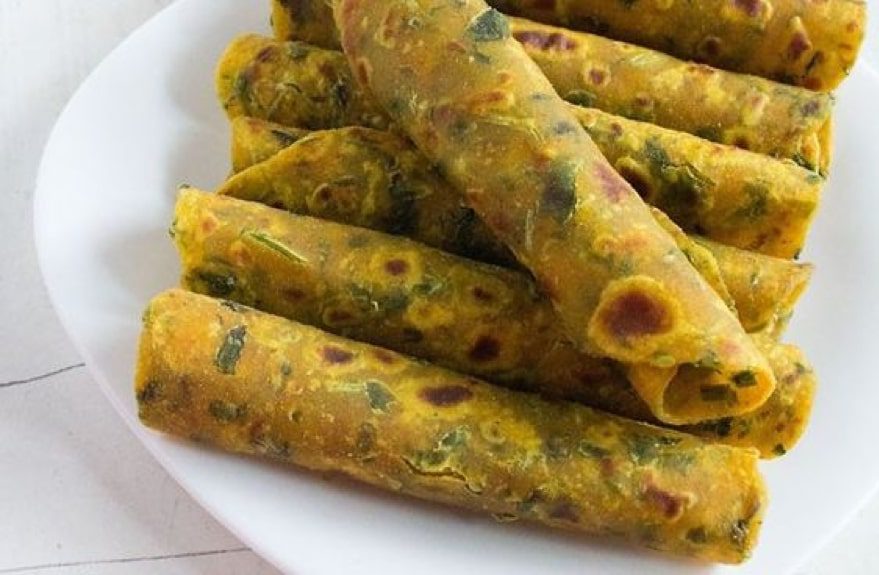
Image Credit – www.grubwaz.com
4) The All-Time Favorites Bread Pakodas
“Bread pakode ki kasam” said Ranveer Singh in a popular Bollywood movie. Indeed, bread pakoda is so sacred that you can swear upon it. Cut slices of bread dipped in a besan batter and fried till golden and crisp. Bread pakodas can be stuffed with a tangy masala, a green chutney, thick slices of paneer or a mix of spicy boiled potatoes. Serve with sweet, sticky tamarind and jaggery sauce (saunth), break pakodas are loved by most Indians.
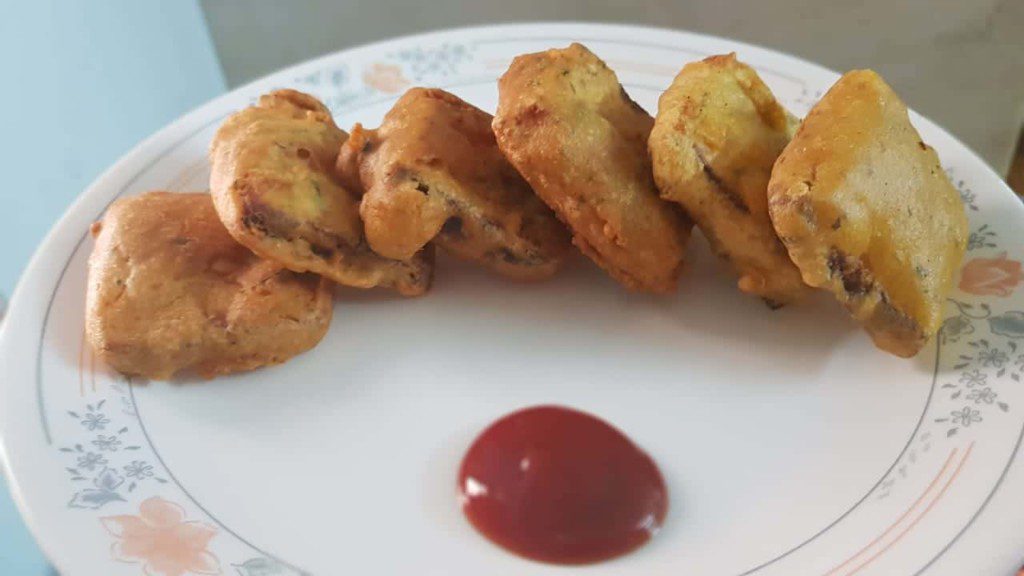
Image Credit – Nishtha Sethi
5) Dhoklas With Besan
Dhoklas are an evergreen Gujarati snack that is enjoyed throughout the country. The mustard seeds and green chilies on top of a spongy dhokla are like an icing on the cake. There are many versions available in the market that you can choose from like idli dhokla, sandwich dhokla or even a rice dhokla. Dhoklas are very easy to make at home with besan, some fruit salt, and a steamer.
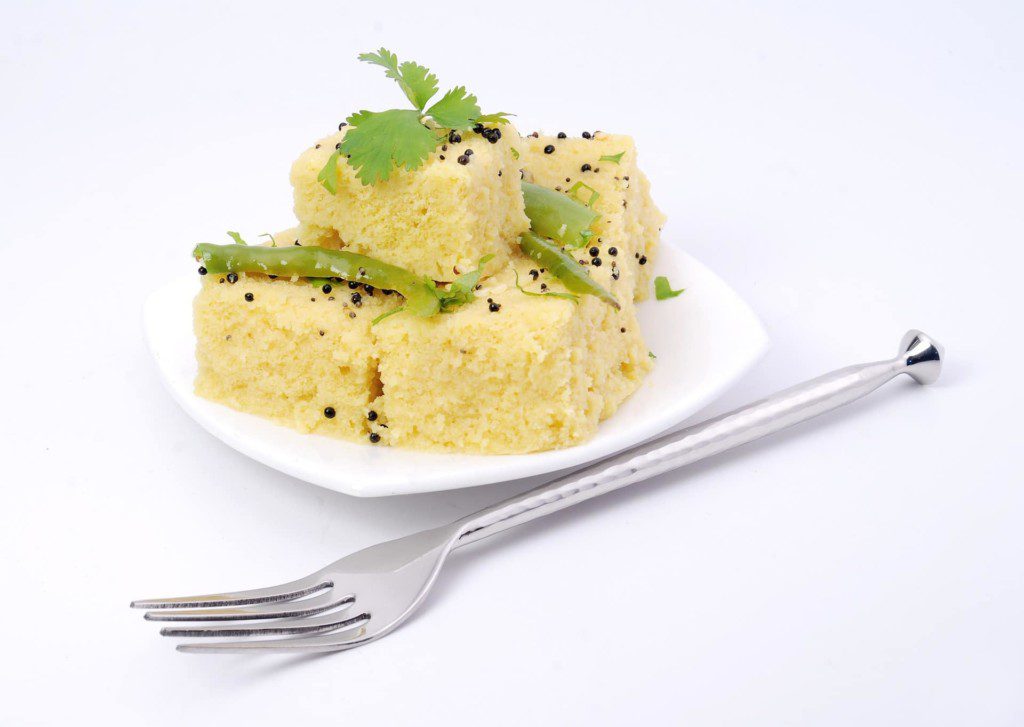
6) Bhajia or Pakodas or Fritters – A Classic Rainy Day Snack
Use a spicy besan-mix to make what is probably the most popular snack in India. Pakodas or fritters are a deep-fried snack that is associated with rains in India. Dunked in a pool of chutneys, eating some crunchy pakodas with chai on a rainy day is bliss. Almost everything in your vegetable compartment can be turned into a pakoda. Some of them being – potatoes, onions, cauliflower, spinach, green chilies, pumpkin, brinjal, and baby corn. Paneer pakodas are also extremely popular in India.
Tip – While making the batter, make sure you use chilled water. This will ensure super crispy results.
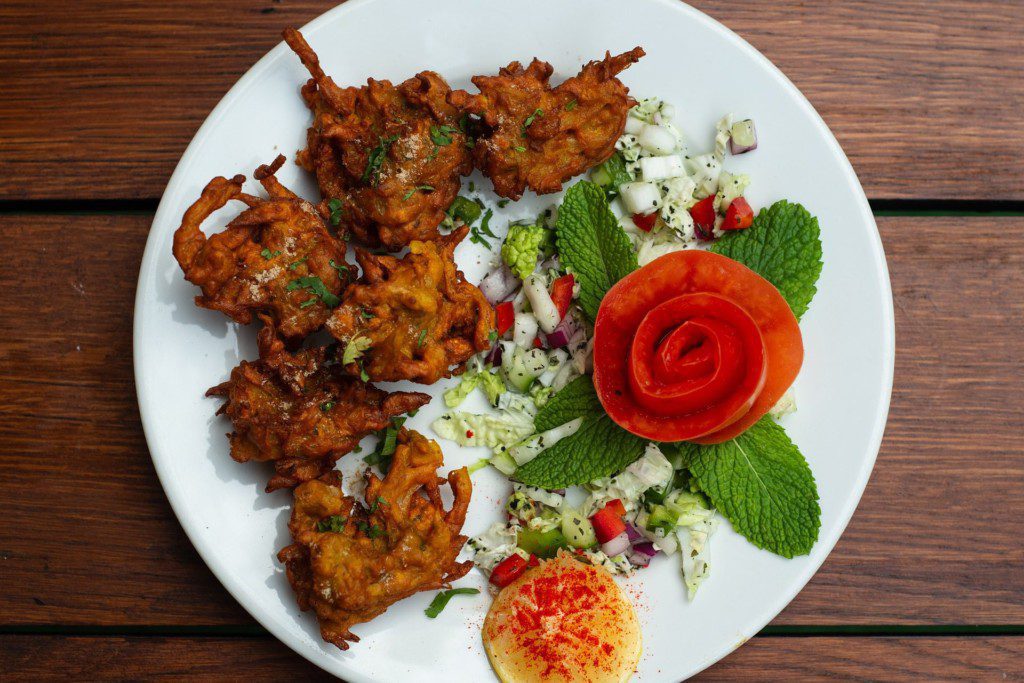
7) Rajasthani Gatte Ki Sabzi
Gatte ki sabzi originates from Rajasthan and is very easy to make at home. Thick logs made with besan, yogurt, and spices that can be deep-fried or boiled in water to cook. Once done, they have to be cut up in small cylindrical portions. They are then simmered in a tomato-based gravy. Serve with chapatis or boiled rice.
8) Punjabi Kadi Pakoda
Besan + dahi = Kadi
Kadi pakoda is a very popular dish made using besan enjoyed with a bowl of steaming hot rice. The dish has a huge fan base in Northern India. There have been legit online food wars over Rajma-chaawal Vs Kadi-chaawal. Making a Punjabi style curry needs a lot of khatti dahi (curd that has gotten sour). Make onion pakodas to dunk in the kadi and serve with boiled rice. The onion pakodas require thin, long juliennes of onions and a rough coating of besan. Make sure you season the kadi and the pakodas appropriately, or else you might end up over-salting the dish. Temper with dried red chilies, mustard seeds, coriander seeds, and ginger.
View this post on Instagram
9) Kurkuri Bhindi
Thin, long slices of bhindi (ladyfinger / okra) coated with besan and spices. Deep-fried till crisp and crunchy, kurkuri bhindi is a must-have on your lunch menu. This dish is also a great way to introduce bhindi to your kids. We can assure you that they would gobble it all up before you can fry up another batch.
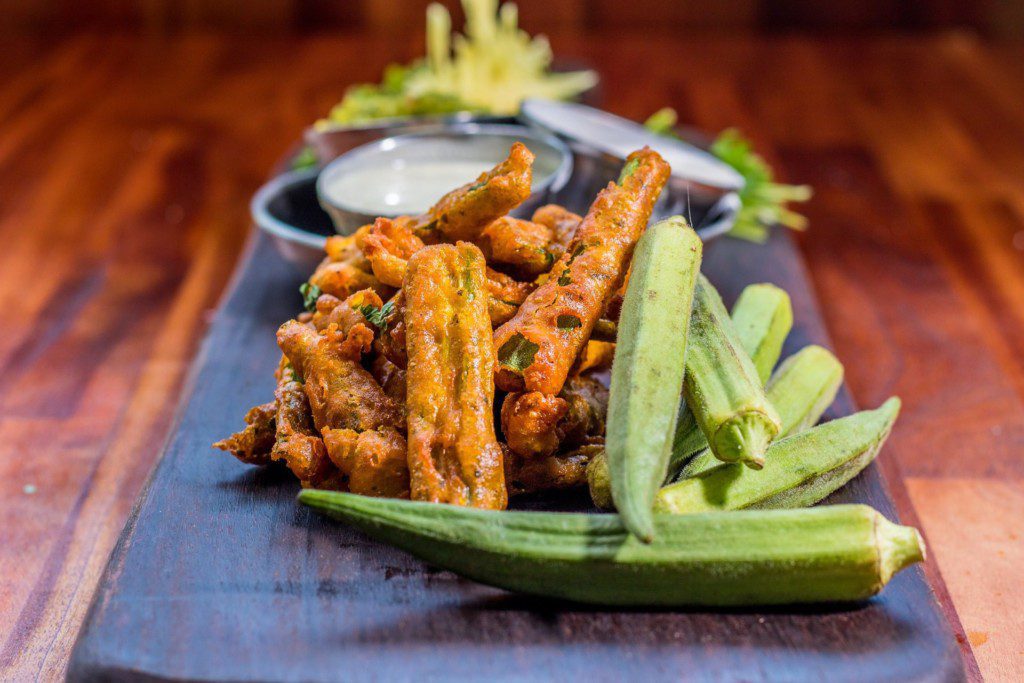
10) Make Sev At Home With Besan
Sev is a popular namkeen eaten throughout India in different shapes, sizes and flavor. Making sev at home requires very few ingredients like besan, salt, and red chilies. You will require a special sev maker. Make a stiff dough with besan, spices, and water. Add the dough in the sev maker. In a wok of hot oil, release the sev through the sev making tool and fry till crisp and cooked.
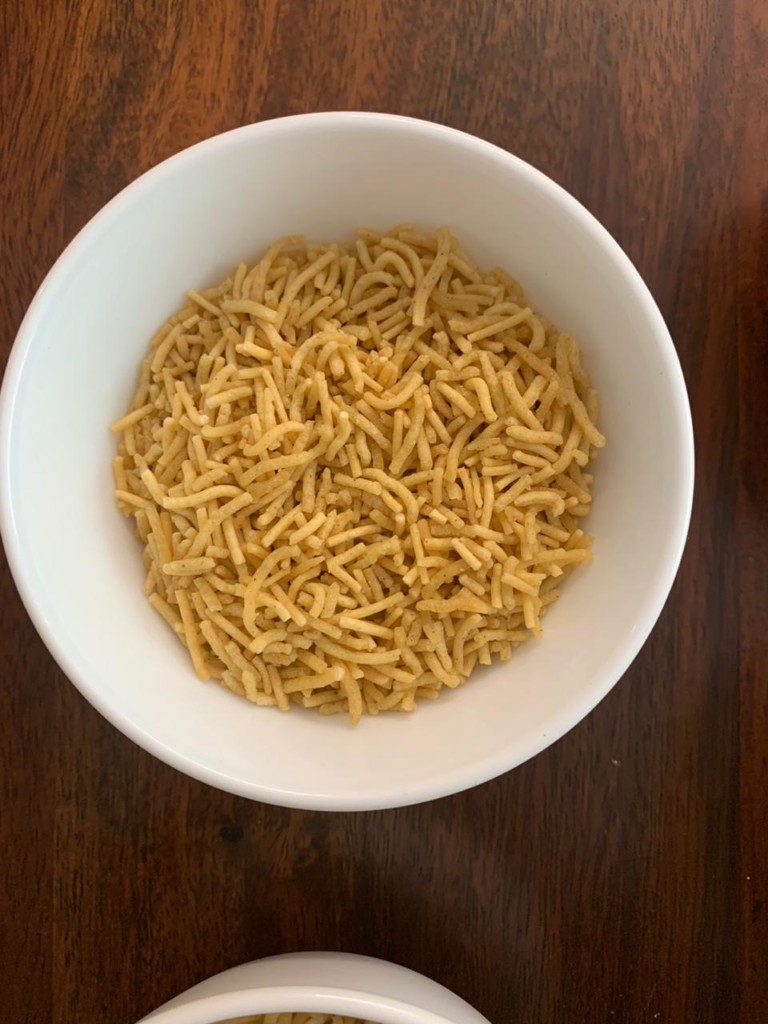
11) Aloo Bonda
Medium-sized balls of boiled mashed potatoes and spices dipped in a thick besan batter and deep-fried. Eat aloo bonda as it is with chutneys or sandwich it between a warm buttered pao and enjoy! If you are missing some road ride vada pao, smother some spicy chutneys on both sides of the pao and we are sure the cravings will be manageable.
View this post on Instagram
12) Sindhi Curry
A tangy Sindhi Curry requires besan and tomatoes to begin with. Vegetables like drumsticks, french beans, potatoes, lotus stem, and ladyfingers release their individual aromas in the stockpot and it becomes one big aromatic fest. Temper with curry leaves and mustard seeds. Serve with boiled rice and aloo tuk, Sindhi curry is a very loved Indian dish.
13) Gujarati Kadi
It doesn’t take long to prepare a sweet and tangy Gujarati Kadi in comparison to a Punjabi Kadi. While the Punjabi Kadi is thick and spicy, Gujarati kadi has a thin consistency and is sweet to taste. You can add vegetables to the kadi or even a handful of boondi. Some like to add pakodas to Gujarati kadi, but we suggest otherwise. This tastes great with some palak puris, boiled rice or even a thick bajra khichdi.
14) Mirchi Vada
Slit large green chilies stuffed with a boiled potato and onion mix. Dipped in a thick besan batter and deep-fried till golden. Serve with a meethi saunth chutney and coriander–mint chutney. If you are not a fan of spicy food, make sure you remove all the seeds while stuffing the chilies. Larger the chilies, the lesser is the spice quotient.
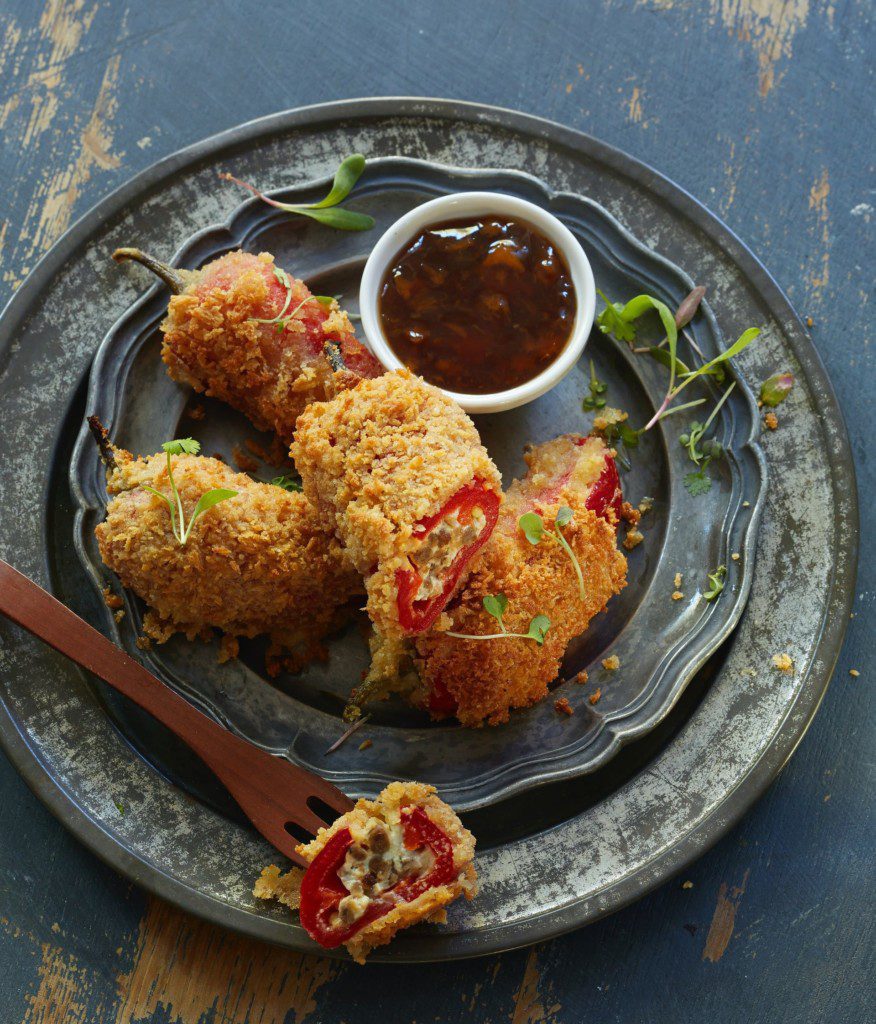
Image for representational purpose only
15) Ghiye Ke Kofte
Grated bottle gourd (ghiya), red chili powder, salt, dried coriander seeds (sookha dhaniya) and besan mixed together loosely and deep-fried till golden. Dipped in a tomato and onion gravy, ghiya koftas are rich with the taste of besan. These koftas can be served with warm ghee smeared rotis and some freshly cut salad.
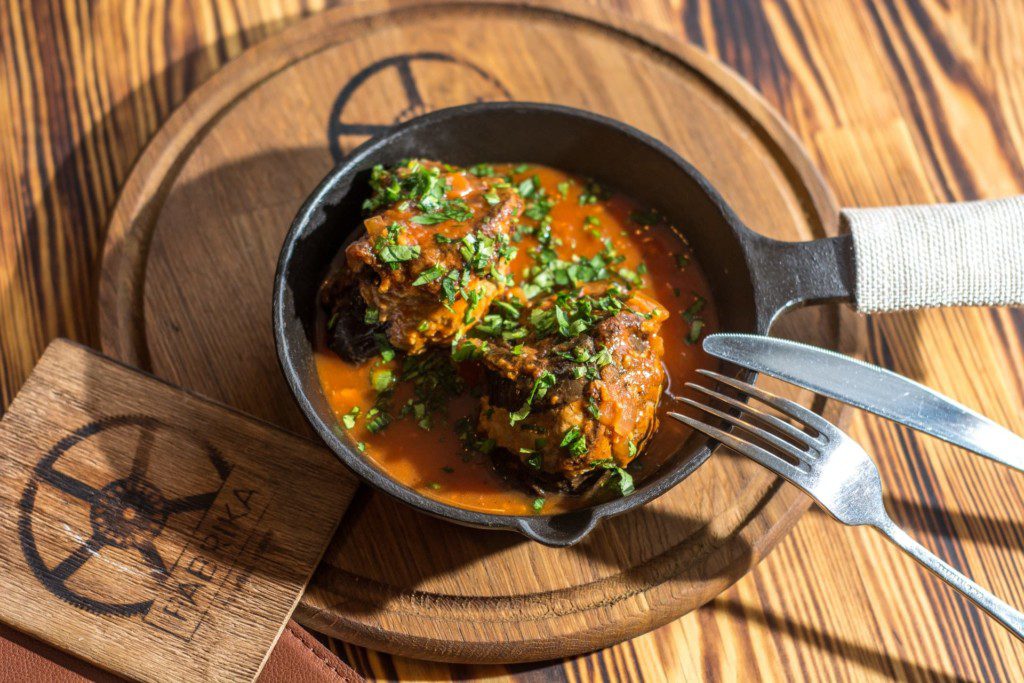
Image for representational purpose only.
16) Mysore Pak
Mysore Pak is a sweet dish that originated in Karnataka, India, and guess what? One of the main ingredients in Mysore Pak is besan too! Three key ingredients used to make this popular Indian sweet are besan, sugar, and ghee. It is an extremely decadent and rich mithai that is loved throughout India.
17) Besan Ke Ladoo
Besan ke ladoo have a lovely crumbly texture and are super easy to prepare at home. Besan, sugar, lots of ghee and a hint of cardamom are all you need to make mouth-melting besan laddoos at home. Add slivered almonds if you love the crunch. Some like to add gond katira too. Roasting the besan correctly without burning it is the key to obtain fragrant laddoos.
View this post on Instagram
18) Besan Ka Halwa
If you are a Punjabi and haven’t eaten a bowl of besan halwa as yet, are you even a Punjabi? Make sure you make this halwa in ghee only. Making this in any other form of fat will not produce good results. Making a perfect bowl of besan ka halwa requires the correct level of roasting the besan. Top with lots of roughly chopped almonds, cashews, and pistachios.
19) Besan Ki Burfi
We cannot stress enough on how important it is to cook besan properly to avoid the raw taste of besan (which is not great, to tell you the truth). Cook besan in ghee till it is roasted and releases that besan-aroma, add sugar and cardamom powder. You can add dry fruits too at this stage. Set this mix in a greased steel plate. Cut into small squares and enjoy!
20) Besan Sheera
Besan ka sheera is more of a cold remedy than a dessert, to be true. Every Punjabi household has an elderly member always recommending this sheera if someone falls ill. Truth to be told, it works too! Ghee, besan, jaggery, and a pinch of turmeric and black pepper is all it takes to say goodbye to that annoying cold.
FAQs About Besan
-
Is besan good for health?
Yes, besan is good for health. Besan is rich in vitamins and minerals. It has a higher satiety value than whole wheat flour and is lower in calories. It is rich in protein and has a high fiber content.
-
Is chickpea flour the same as besan?
Contrary to popular word, chickpea flour is NOT the same as besan. Besan is called gram flour which is made with chana dal. Chickpea flour is also called garbanzo flour.
-
Is besan gluten-free?
Yes, besan is naturally gluten-free and is safe for consumption by people with a gluten allergy.
Out of ideas for your next meal? Worry not, we’ve got your back! A set of fresh ideas and suggestions to keep your menus interesting! Read these posts to help you choose what to cook for the next meal using regular staples like atta, suji, moong dal, rice and potatoes. We will also give you tips on how to use common condiments like mayonnaise and spices like jeera and turmeric in your diet to maximise the usage of everyday products.
About The Author
Nishtha Asrani Sethi, born and brought up in Delhi, is a content writer who has previously worked with NDTV and Resolver. Her roots are deep within the food industry, thanks to her family business and a keen interest in contemporary food products. Nishtha loves to serve her articles with a side of humor. Her Bachelor’s degree in Home Science comes in handy while researching the science behind the food. When she is not trying to win a battle of fries vs fruit with her daughter, she is busy experimenting with her huge joint family with crazy recipes.


